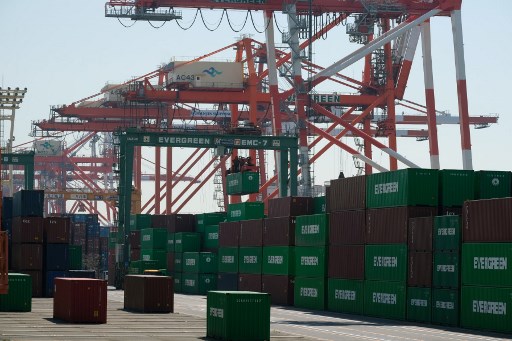
403
Sorry!!
Error! We're sorry, but the page you were
looking for doesn't exist.
Iran’s exports from Khorasan Razavi climb by 20 percent in 9 months
(MENAFN) During the first nine months of the current Iranian calendar year (March 21-December 21, 2023), the export value from Khorasan Razavi province in the northeast of Iran saw a noteworthy increase of 20 percent, reaching USD1.201 billion, according to Abolfazl Chamandi, the deputy governor-general of the province for economic affairs coordination.
This surge follows the export of non-oil products worth USD1.434 billion in the previous Iranian calendar year 1401, as reported by Javad Jafari from the province's customs department.
Jafari highlighted that the exported products, totaling 2.222 million tons, experienced a 15 percent decrease in weight but achieved a 1.1 percent growth in value.
Major exports included saffron in packages exceeding 30 grams, pistachios, steel bars, apples, and flooring. The primary destinations for these exports were Afghanistan, Turkmenistan, Tajikistan, Uzbekistan, Iraq, and the United Arab Emirates (UAE).
In addition, the province imported 275,000 tons of non-oil goods valued at USD644 million during the past year, reflecting an 11 percent increase in value and a 20 percent growth in weight.
Main imports comprised mobile phones, cotton, rice, yarn, wheat, and hot rolling machines, with the UAE, Tajikistan, Turkey, China, Pakistan, and Uzbekistan identified as the major sources of import.
This surge follows the export of non-oil products worth USD1.434 billion in the previous Iranian calendar year 1401, as reported by Javad Jafari from the province's customs department.
Jafari highlighted that the exported products, totaling 2.222 million tons, experienced a 15 percent decrease in weight but achieved a 1.1 percent growth in value.
Major exports included saffron in packages exceeding 30 grams, pistachios, steel bars, apples, and flooring. The primary destinations for these exports were Afghanistan, Turkmenistan, Tajikistan, Uzbekistan, Iraq, and the United Arab Emirates (UAE).
In addition, the province imported 275,000 tons of non-oil goods valued at USD644 million during the past year, reflecting an 11 percent increase in value and a 20 percent growth in weight.
Main imports comprised mobile phones, cotton, rice, yarn, wheat, and hot rolling machines, with the UAE, Tajikistan, Turkey, China, Pakistan, and Uzbekistan identified as the major sources of import.

Legal Disclaimer:
MENAFN provides the information “as is” without warranty of any kind. We do not accept any responsibility or liability for the accuracy, content, images, videos, licenses, completeness, legality, or reliability of the information contained in this article. If you have any complaints or copyright issues related to this article, kindly contact the provider above.
Most popular stories
Market Research

- Manuka Honey Market Report 2024, Industry Growth, Size, Share, Top Compan...
- Modular Kitchen Market 2024, Industry Growth, Share, Size, Key Players An...
- Acrylamide Production Cost Analysis Report: A Comprehensive Assessment Of...
- Fish Sauce Market 2024, Industry Trends, Growth, Demand And Analysis Repo...
- Australia Foreign Exchange Market Size, Growth, Industry Demand And Forec...
- Cold Pressed Oil Market Trends 2024, Leading Companies Share, Size And Fo...
- Pasta Sauce Market 2024, Industry Growth, Share, Size, Key Players Analys...





















Comments
No comment